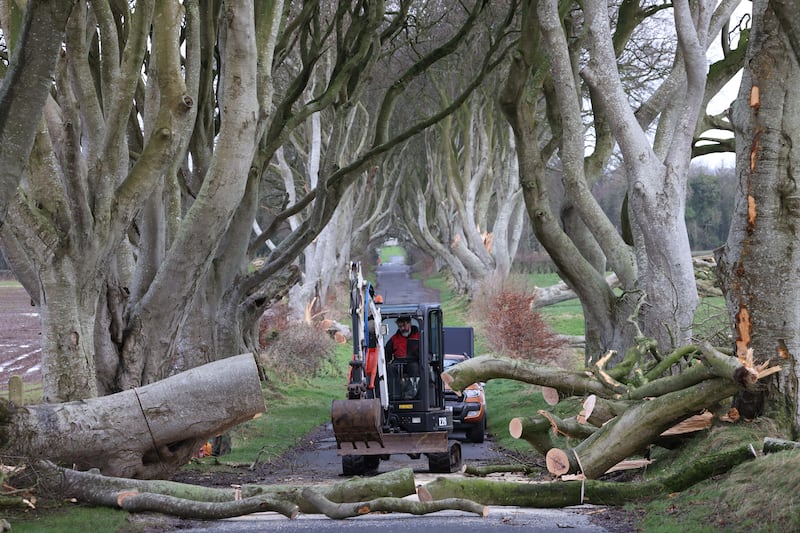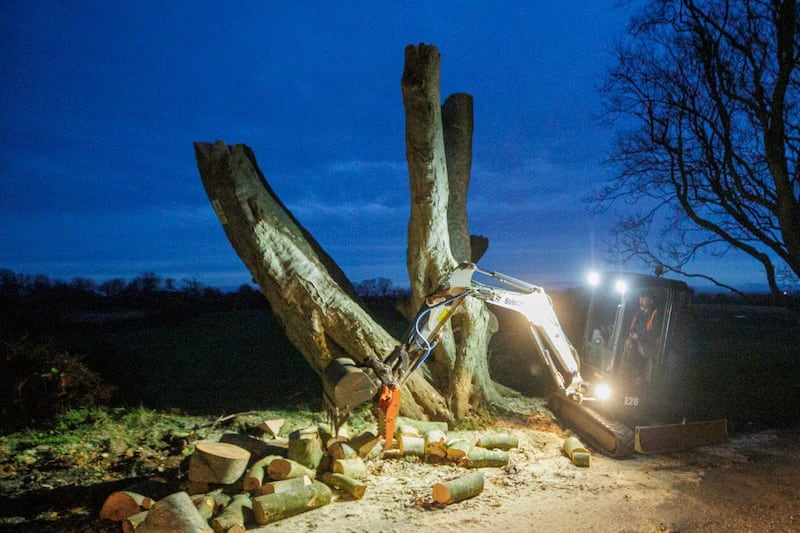The Dark Hedges were, as every article about the distinctive tunnel of trees tells you, "made famous" by the TV series Game of Thrones. Its appalling climax notwithstanding, I was a fan of the HBO blockbuster series and, as regular readers of this column will know, I'm also a big fan of trees. While logic would therefore suggest I should love the Dark Hedges, I can't say I'm especially enamoured by the parallel rows of mature beech trees, whose future is seemingly in jeopardy.
It has emerged in recent weeks that six of the trees are to be cut down, after a survey found a majority were in a poor state. You don't need an aborist to tell you, they're getting old, and while these particular beech could, if coppiced, live for many decades, and possibly centuries, their upper limbs pose a health and safety risk.
I find concern about the fate of this well-known Co Antrim avenue, which now features little over half of the original 150 trees planted in the late 18th century, rather misplaced. You see, in the time since the Dark Hedges became a major tourist attraction on foot of its fleeting appearance in Season 2 of Game of Thrones, hundreds if not thousands of trees have been felled in the north, including many with Tree Preservation Orders (TPOs).
Breaching a TPO is a criminal offence, punishable by a fine of up to £100,000 on summary conviction, or an unlimited fine on indictment. But it may as well be 30 years' hard labour or even the death penalty for the number of times anybody's convicted.
A report last month by the Public Service Ombudsman highlighted how out of 369 reported TPO violations in the region between 2019-22, not a single prosecution was pursued by councils or the Department for Infrastructure (DfI).
Read more: Casual Gardener: Bare root planting is best for native woodlands
Casual Gardener: Beech has one the most beguiling golden displays of autumn
My other bugbear with the popularity of the Dark Hedges is that beech isn't even a native species, and therefore doesn't have the same biodiversity value as say birch or Irish oak. It may surprise you to learn that Fagus sylvatica arrived in Ireland a relatively recent 1,000 years ago – at least 10,000 years after the last ice age, which is regarded as the cut-off point for designating 'natives'.
Beech has since naturalised itself, becoming a mainstay of our forests, woodlands and hedges. Like sycamore, it's one of the best and most benign from a bad bunch, in that it's not especially invasive or acts to the detriment of indigenous Irish plantlife. It also makes good, attractive hedging, which is one of the reasons it's yet to join rhododendron and gunnera on the cancelled list.
Left to grow unchecked and unpruned, beech will grow as tall as an ash, thick and smooth silvery, grey limbs stretching up like dancers' arms – the effect that when repeated creates the understandable allure of the Dark Hedges. But when clipped and the leader removed, a row of the comparatively squat beech, planted roughly 45cm/18 inches apart, can create a solid natural boundary within three-four years.
Although not evergreen, the beech does hold its 'dead' foliage for much of the winter. While the spent leaves of beech are copper in colour, this does not mean it's necessarily a copper beech (Fagus sylvatica f. purpurea), which confusingly has deep red/purple foliage. You can get both reasonably cheaply at nurseries, bare root, for planting between now and March.








